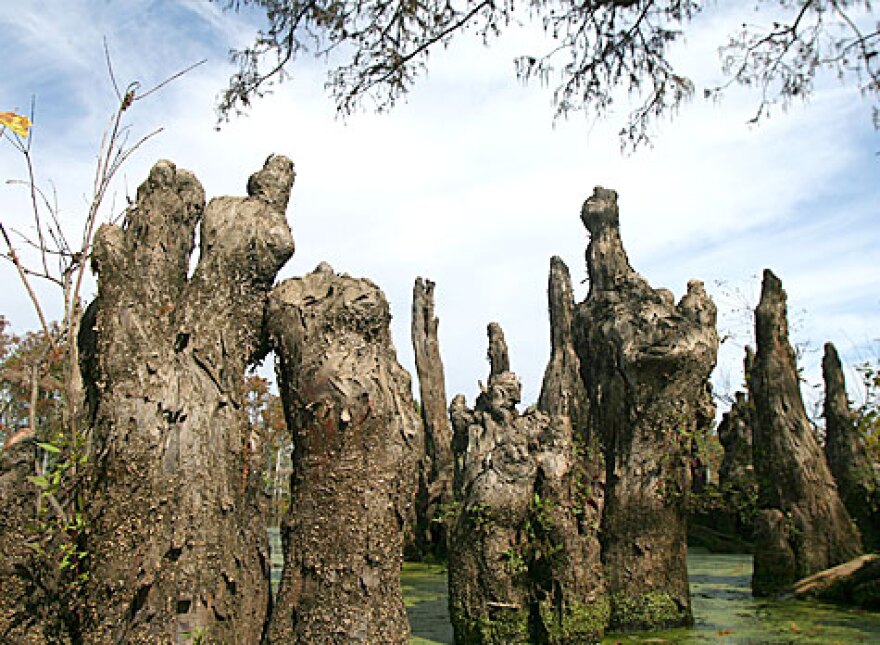Nature photographers, especially this one, are fond of using their long, telephoto lenses to isolate their subjects and eliminate anything that distracts from the beauty of the image.
We make sure utility poles and wires don’t show up. We leave out roads, cars and other evidence of civilization when we are focusing on nature.
That’s fine, except that sometimes we eliminate an element from the picture that looms large over our rivers and other natural areas — us.
Yes, people are an integral part of our landscape, our natural areas and our rivers.
It’s something we’ve always known deep down: People and nature can’t really be separated.

So this time, I’ve tried to put together a set of pictures that show Illinois’ rivers as working rivers.
They are still beautiful places, but they are not untouched and pristine.
Even when evidence of people cannot be seen, it can be heard.
On the day the photos of the Cache River were taken, a combine could be heard harvesting crops in the distance.
Speaking of the Mississippi River, farmer Russ Koeller of New Canton once told me, “We aren’t going back to the stream Lewis and Clark knew.”

Koeller and his family farm in the broad floodplain of the Mississippi River in Pike County.
I met Russ when covering the Flood of 1993 and its subsequent anniversaries.
He’s right, and in the years since the big flood, conservationists have begun to look at rivers in a way that includes people.
I attended the Society for Ecological Restoration conference in Ann Arbor, Mich., in May and listened to presentations that encouraged us to

expand beyond saving small areas to working to heal the surrounding landscape, too.
That means farmers, real estate developers, homeowners and many others are learning how to prevent chemical run-off — from farm fertilizers on a large scale to lawn fertilizers on a much smaller one.
They are learning about permeable paving surfaces that allow water to soak into the ground instead of overwhelming storm sewers.
They are learning more and more about native plants and trees that can hold the soil in place.
All of us have a stake in the future of our rivers, and we have to work together.
Only then can our rivers be truly healthy and productive — for the wildlife that depends on them, and for the people that live along them.

Chris Young is a writer, photographer and videographer at the State Journal-Register in Springfield, focusing on outdoors, nature and environment coverage. His specialty is nature photography, highlighting the wildlife and natural areas of central Illinois. He studied journalism at Iowa State University and is currently working on his master’s degree in Environmental Studies at the University of Illinois Springfield.
Illinois Issues, July/August 2012










